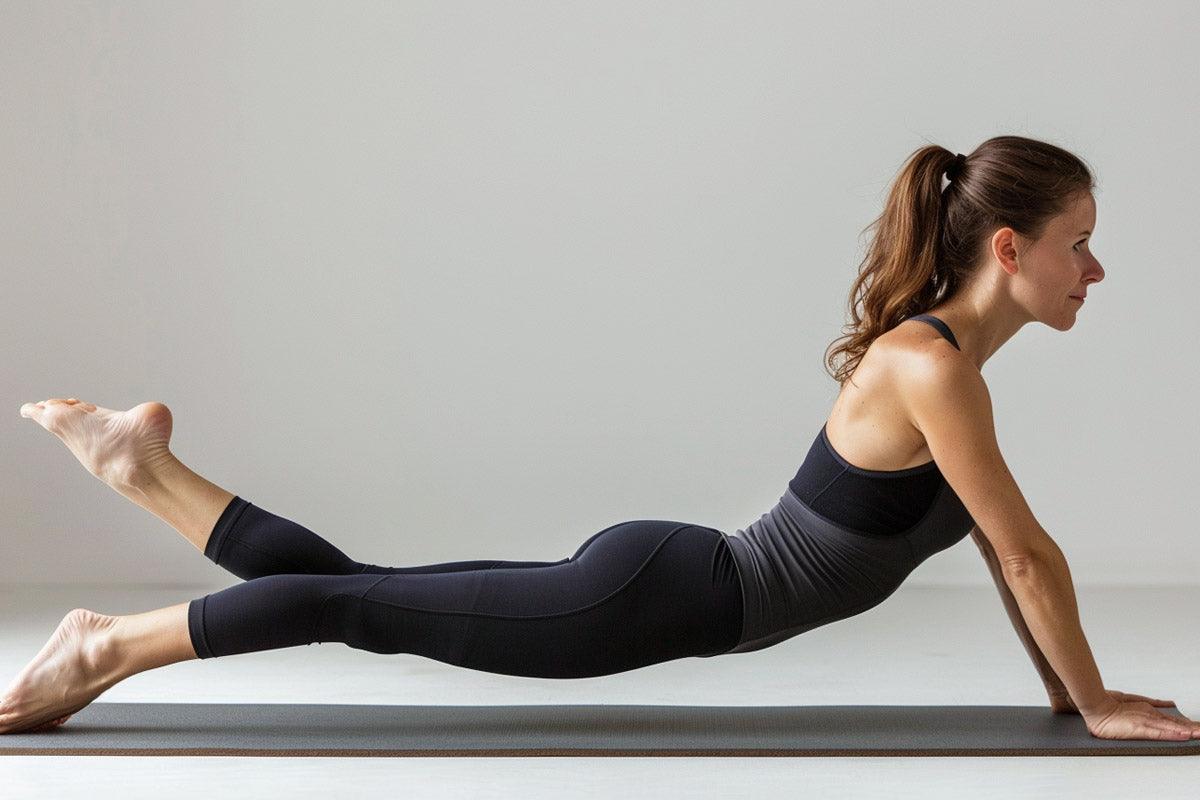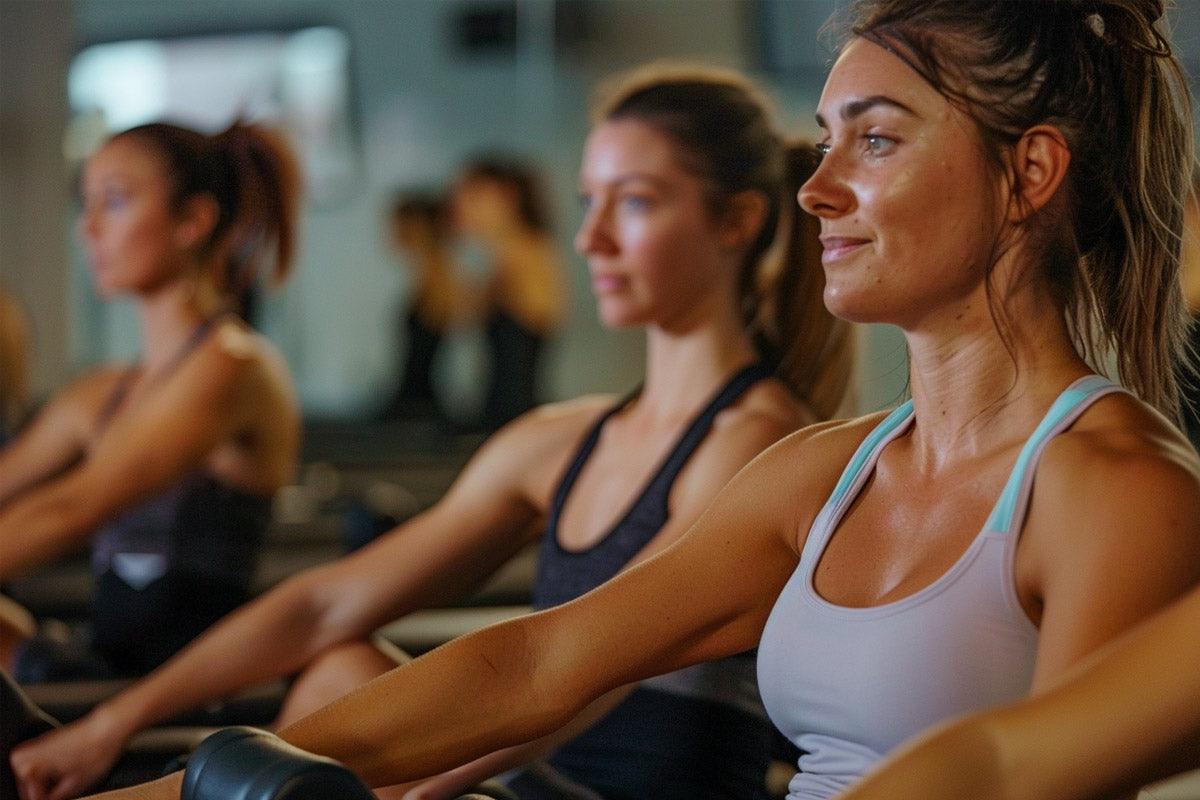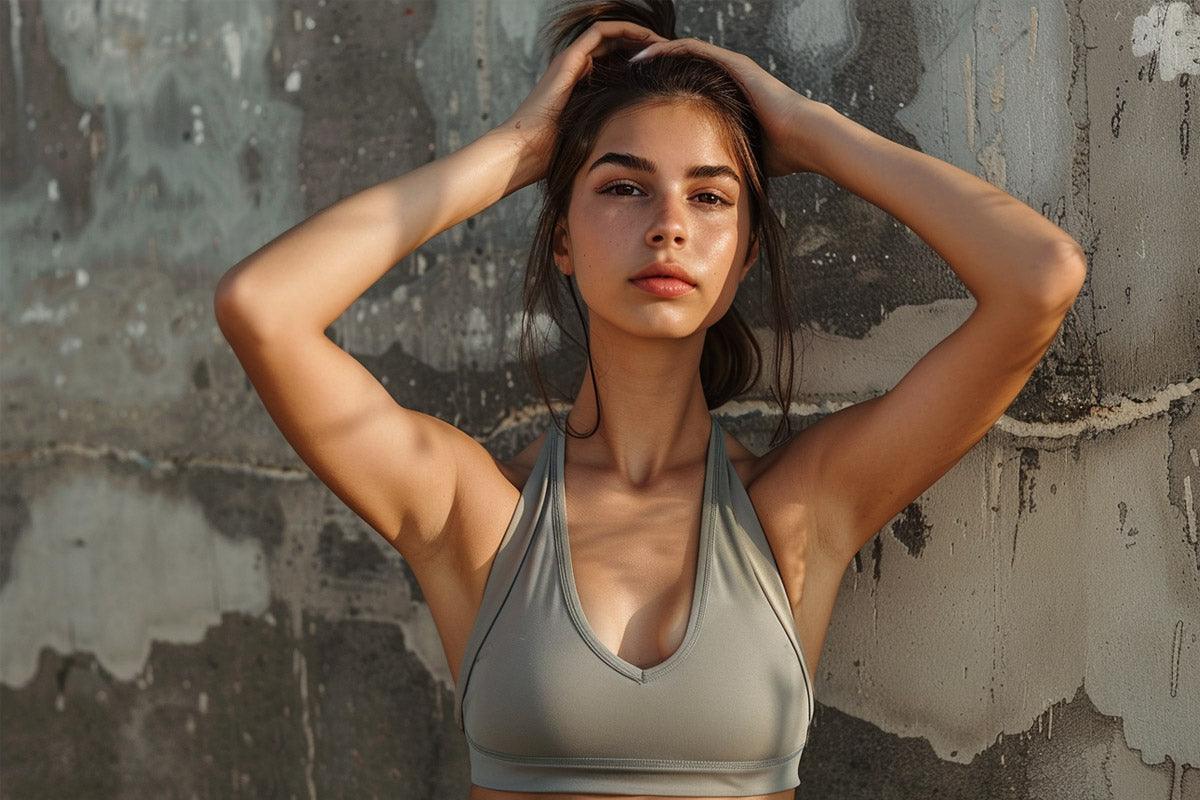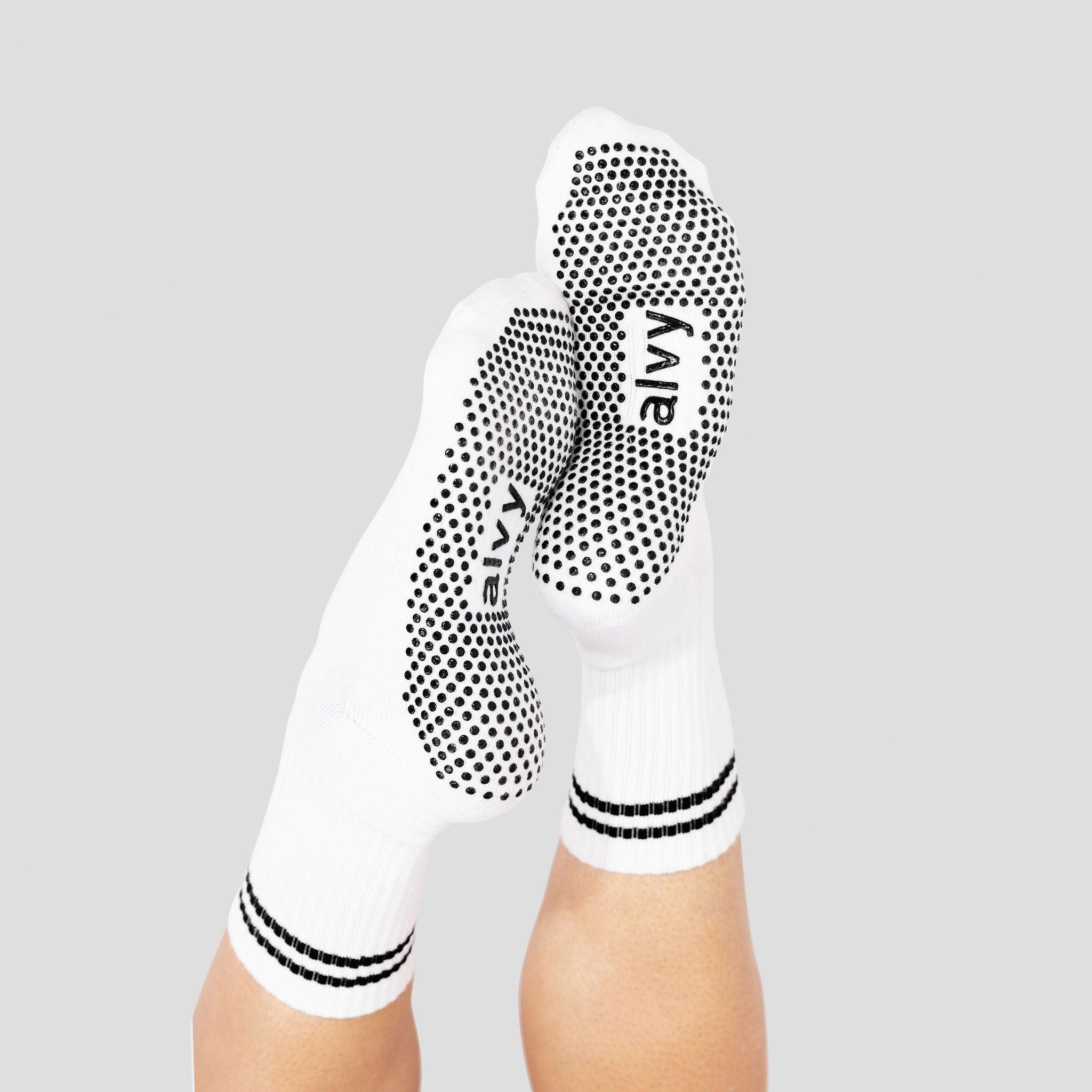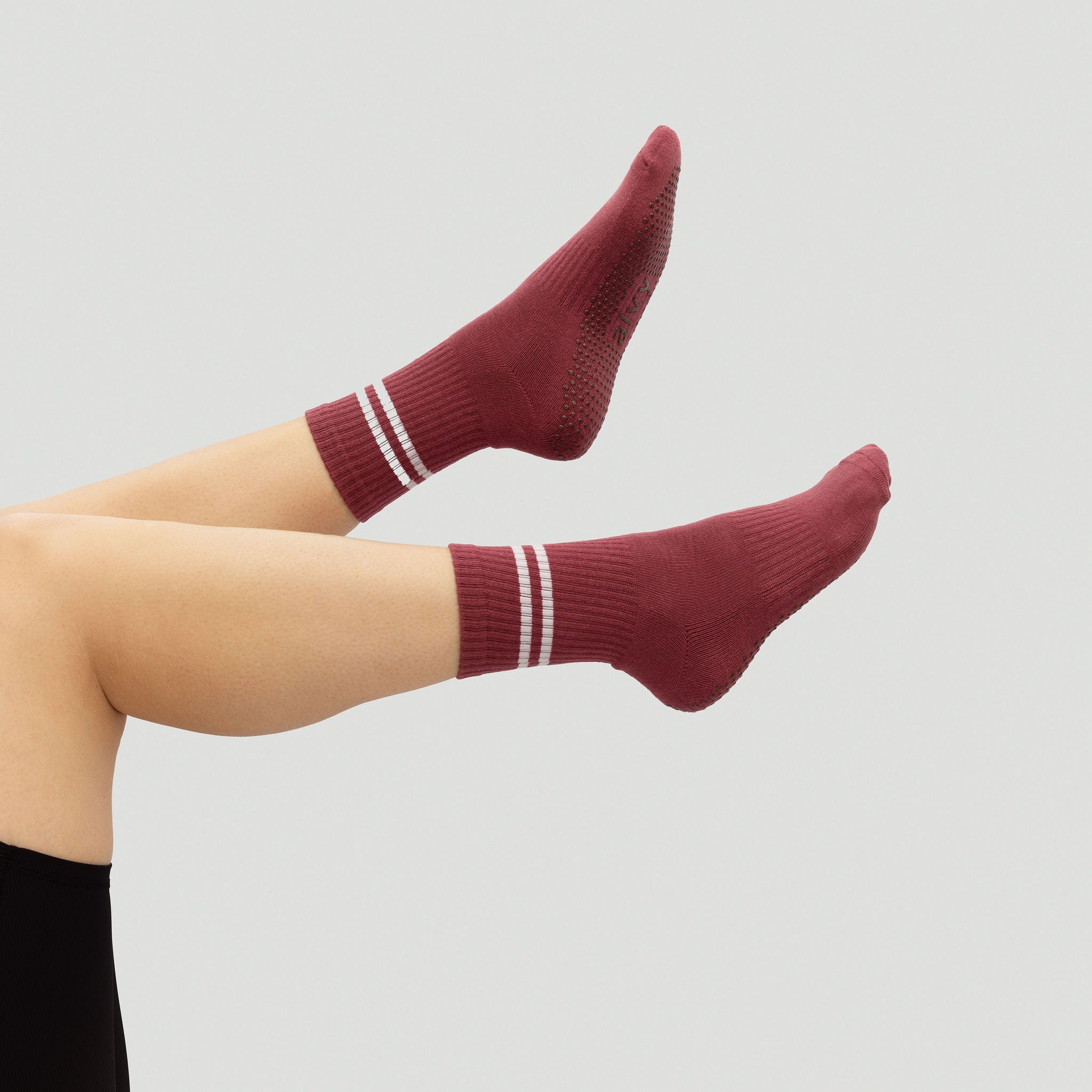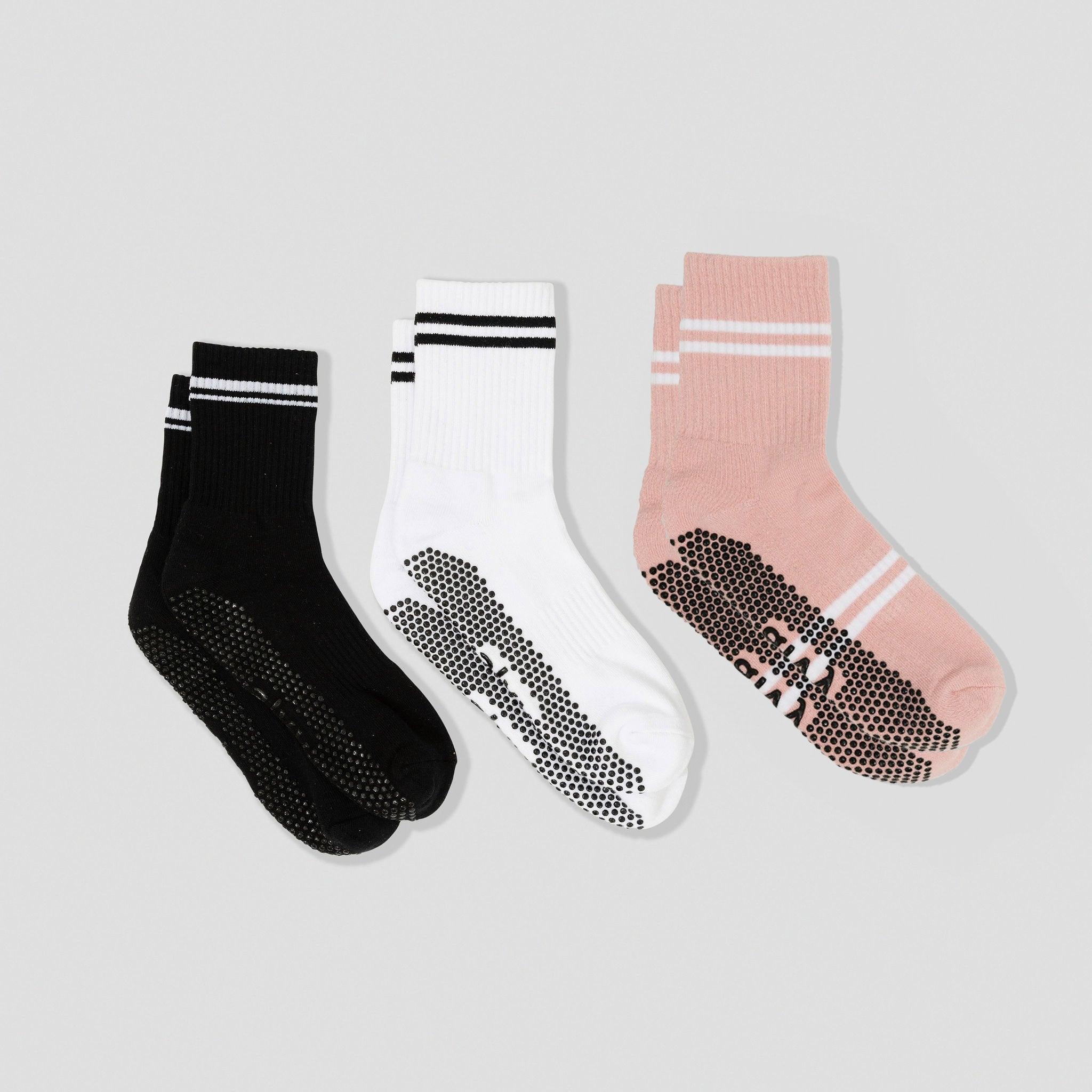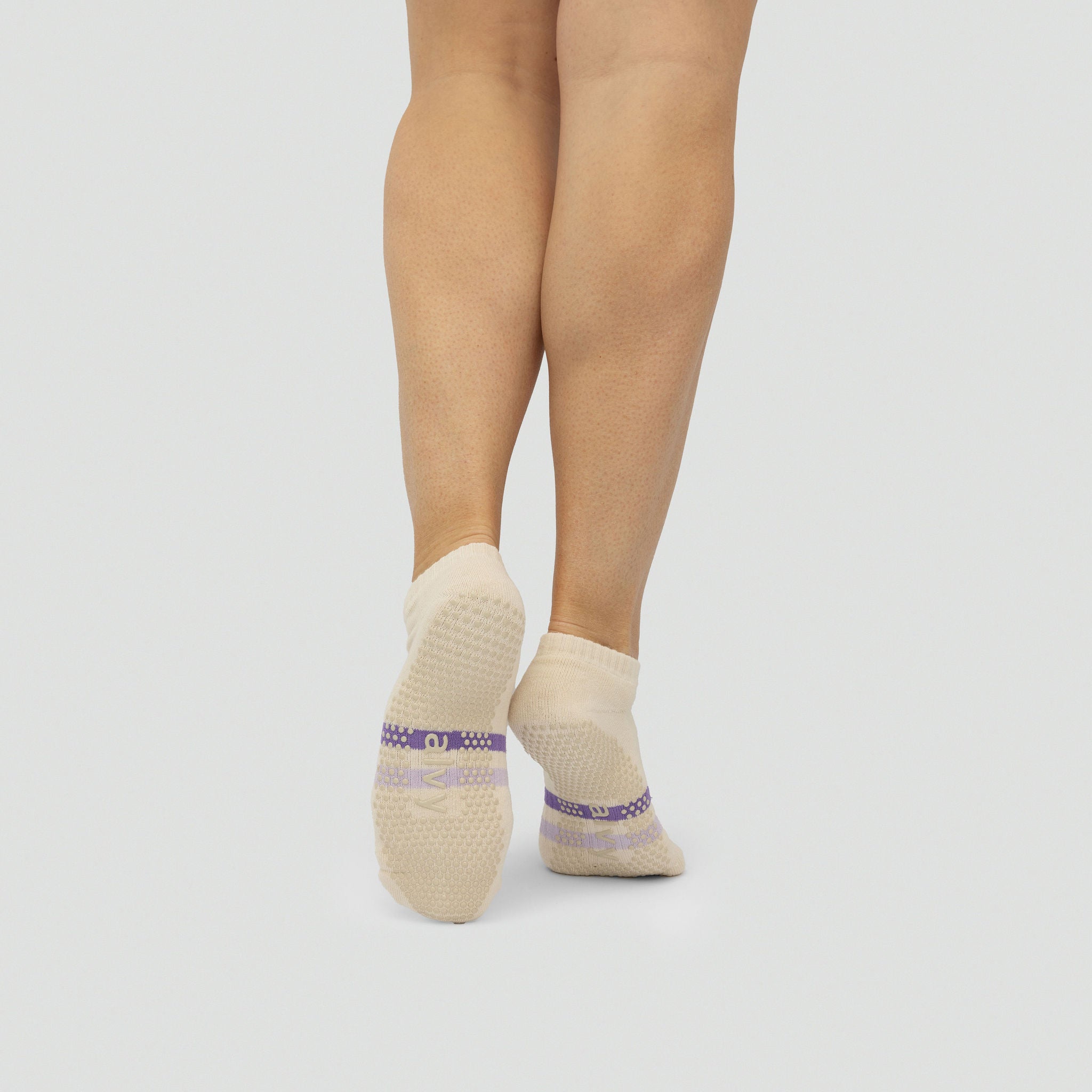There is an abundance of Pilates exercises out there that target different parts of your body. Most aim at improving your core strength and flexibility, each having ways to increase or decrease the difficulty level.
Here are some of the more common Pilates exercises to try, whether you are a beginner or advanced.
The Pilates Exercises You Need To Conquer
Below is a list of my favourite and not-so-favourite Pilates exercises. These exercises really improve core strength, coordination, balance, and flexibility. All can be done on a mat and a pair of grippy socks but most can be done with a Pilates reformer.
1. The Hundred
Great for mat work and slightly more challenging on a reformer, the Hundred is a popular exercise that will make you feel the burn. Sometimes used as a warm-up exercise, the Hundred boosts circulation and engages your core since you use your abs to maintain the elevation in your legs. But apart from strengthening your core, it also works on your hip flexors and shoulder girdle.
Despite having a core that’s a work in progress, the Hundred is an exercise I can do for a full minute. It’s an all-body experience that is incredibly satisfying to achieve.

How to do it:
- Lie on your back, lift your legs to a tabletop position, and raise your head and shoulders while engaging your abdominals.
- Extend your arms by your sides and pump them up and down while breathing in for 5 counts and out for 5 counts.
- Repeat until you reach 100 counts or for one minute.
You can raise your legs higher if you want more of a challenge, but make sure you are pointing your toes to the sky and extending.
2. Roll-Up
Akin to a sit-up, the roll-up focuses on spine articulation and flexibility while strengthening your abdominals, spinal flexors and hip flexors. If you find core exercises challenging, this might be difficult. Instead of trying to roll up all the way, use your core to rise only a little.

How to do it:
- Lie flat with your arms extended overhead.
- Use your abdominals to slowly (don’t go fast) roll up vertebra by vertebra, reaching towards your toes.
- Roll back down slowly, vertebra by vertebra, with control.
3. Single Leg Stretch
Control and coordination in Pilates are incredibly important, and the simple leg stretch delivers them in spades. Improving circulation and engaging your entire core, the leg stretch targets your hip flexors and abdominals. The lower your legs are, the more difficult this exercise becomes. If you find this challenging, extend your legs higher while not lifting your pelvis.

- Lying on your back, lift your shoulders and head, and bring one knee to your chest.
- Extend the alternate leg at 45 degrees, ensuring your hips are parallel to the floor or reformer.
- Alternate legs in a scissoring motion while maintaining stability.
Related: What is the 80/20 rule in Pilates?
4. Double Leg Stretch
For most, the double-leg stretch is a bit more challenging than the single-leg stretch. If you starting out, then perfect the single first. The double-arm movement and coordination are okay, but the double-leg stretch will test you.
Targeting your abdominals, hip flexors and shoulder stabilisers, the double-leg stretch is definitely one to practice.
How to do it:
- Lie on your back, lift your head and shoulders, and bring both knees into your chest.
- Extend your arms and legs out long, then circle your arms around as you bring your knees back in.
The important thing to remember is to maintain a neutral spine and coordinate your breathing with your movement. If you want to make this exercise a bit easier or have neck issues, then leave your head on the floor.

5. Criss-Cross
The first Pilates exercise on our list that targets the obliques, the Criss-Cross is all about rotational control using your torso. This one also works on your abdominals and hip flexors.
How to do it:
- Lie on your back, bring your hands behind your head, and lift your head and shoulders.
- Bring one knee into your chest while extending the other leg out.
- Rotate your torso towards the bent knee, alternating sides.
If you want a challenge, increase your rotational speed - but be cautious since maintaining proper form is important. Since we focus on the obliques in this exercise, focus on bringing your shoulder in, not your elbow, towards your knee for deeper work.
Related: The do's and don't in your first Pilates class.

6. Plank
The plank is a simple exercise with many benefits. It is immensely popular on mats and reformers because it greatly enhances core strength and alignment. If you have access to a reformer, many variations of the plank are really enjoyable to perform. Even though I’m not too keen on the standard plank, I look forward to the variations on a reformer.
The plank is great because it targets almost every part of your body, from the abdominals, shoulders, glutes, arms and back. The important aspect is to ensure your neck is aligned with your spine and avoid letting your hips drop.
How to do it:
- With your hands beneath your shoulders and your torso in a straight line, begin in the push-up position.
- Maintain this posture by not letting your hips droop and maintaining a firm core.
If you want to increase the difficulty, try raising one arm or leg off the mat or reformer without losing balance. Alternate sides.
7. Side Plank
The side plank starts to get tough but interesting. This exercise is particularly good at strengthening the obliques and stabilising the shoulder, but it also focuses on your glutes and arms - if you are doing it correctly. If you want a challenge, raise your upper leg or arm.
How to do it:
- Lie on your side and lift your body into a straight line, supporting yourself on one arm.
- Hold this position, keeping your hips elevated and your core engaged. Your shoulders should be stacked, and your body should be in a straight line from your heels to your head.

8. Teaser
Mostly for experienced people, the Teaser is quite a challenging exercise. Combining balance, flexibility, and core strength, the Teaser will test you for sure as it works on your abdominals, hip flexors and spine extensors.
How to do it:
- Sit with your knees bent and feet flat on the floor.
- Roll back slightly, lifting and extending your legs while reaching your arms forward.
- Balance on your sit bones and then slowly lower back down.
To increase the difficulty level, straighten your legs from the start and lift them higher. Conversely, keeping your legs closer to the floor will make the exercise easier.
Try to focus on keeping your back straight and avoid rounding your spine.
9. Swan
Sometimes called the cat stretch, the Swan is a particular favourite of mine. The exercise stretches your entire body length while strengthening the extensors in your back, but your glutes and shoulders are also included. Try to find your zen space and close your eyes for added calmness. Raising your legs while you elevate your torso will increase the difficulty, but it’s quite easy to perform with practice.
How to do it:
- Lie face down with your hands under your shoulders.
- Slowly lift your chest and head off the floor, extending through your spine, and point your gaze to the roof.
- Lower back down with control.

10. Swimming
This exercise might seem comical at first, but trust me, you will immediately feel your glutes and back strengthening. Swimming is very easy to do but effective for your body since it targets the back extensors, glutes, shoulders and abdominals.
You can fasten your arm and leg movements if you want to challenge yourself, but don’t forget to engage your glutes and back to maintain proper form. No matter what speed you do it, maintaining a rhythmic breathing pattern that suits you is the key to swimming. You can also perform this exercise on a reformer box if you have one available.
How to do it:
- Lie face down with your arms and legs extended.
- Lift your opposite arm and leg simultaneously, alternating in a freestyle swimming motion.
11. Leg Pull Front
The leg pull front is another beginner-friendly Pilates exercise where all you need is a mat.
Why it’s good: This move engages the entire body, focusing on core and upper body strength, specifically your glutes, abdominals, arms and shoulders.
How to do it:
- Start in a plank position with your hands behind your ribcage.
- Lift one leg off the ground while keeping your body stable.
- Lower the leg and repeat with the other leg.
12. Leg Pull Back
The leg pull back is the sister exercise to the leg pull front. It strengthens your glutes, hamstrings, lower back, and shoulders, improving hip mobility and strengthening the posterior chain. The key is to keep your shoulders stable and avoid letting your hips sag.
How to do it:
- Sit with your legs extended and hands behind you, lifting your hips off the ground.
- Lift one leg towards the ceiling, lower it back down and switch legs.
13. Mermaid
Aptly named the Mermaid, this exercise enhances side body stretching and improves flexibility by focusing on the obliques, hip flexors, and intercostals. The important thing to note is to keep your hips grounded and focus on lengthening through your side.
How to do it:
- Sit with your legs folded to one side.
- Reach one arm overhead and bend towards the opposite side.
- Return to the starting position and repeat on the other side.

Credit: Intosport
14. Spine Twist
The spine twist is a beginner-friendly Pilates exercise that promotes better spinal mobility and strengthens the obliques. It targets the obliques, spinal rotators, and abdominals and can be very satisfying.
How to do it:
- Sit with your legs extended and arms out to the sides.
- Twist your torso to one side, then return to the centre and twist to the other side. Maintain a firm pelvis and start the twist from your waist rather than your shoulders.
15. Pelvic Curl
The Pelvic Curl strengthens the glutes and hamstrings while promoting spinal articulation. This exercise will put your glutes, hamstrings, abdominals and lower to work, but it’s important to do this slowly.
How to do it:
- Lie on your back with your knees bent and feet flat on the floor.
- Lift your hips off the ground, rolling up through your spine.
- Hold briefly, then slowly roll back down vertebra by vertebra.

Why Pilates Is Great For Your Core Strength
Pilates is great for building core strength because it uses all of the superficial and deep stabilising muscles. Pilates incorporates the complete core into every exercise, improving functional strength and stability in contrast to many workouts focusing only on specific body areas. This approach emphasises precise, controlled motions that enhance posture, muscular balance, and general body mechanics.
Engaging Your Abdominals and Core
Focus on bringing your navel towards your spine to activate your abs and core. Retaining a neutral spine posture means you shouldn’t be arching your back.
Breathing is incredibly important and necessary. Inhale deeply, and deepen the abdominal engagement with your exhale. Maintaining a secure pelvis and controlled motions when performing exercises like leg lifts or planks.

